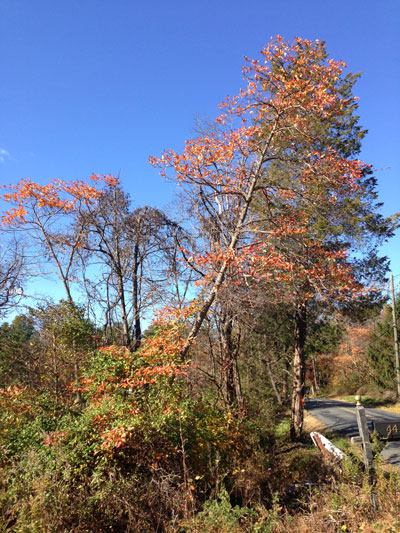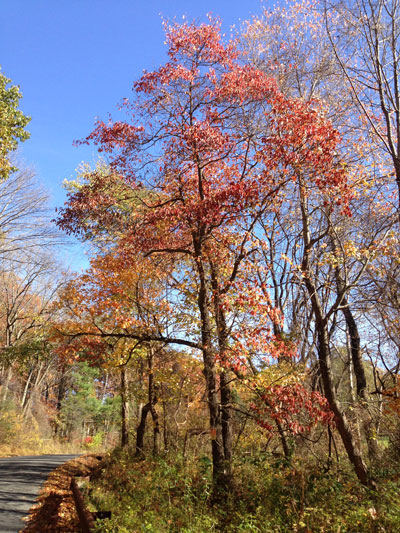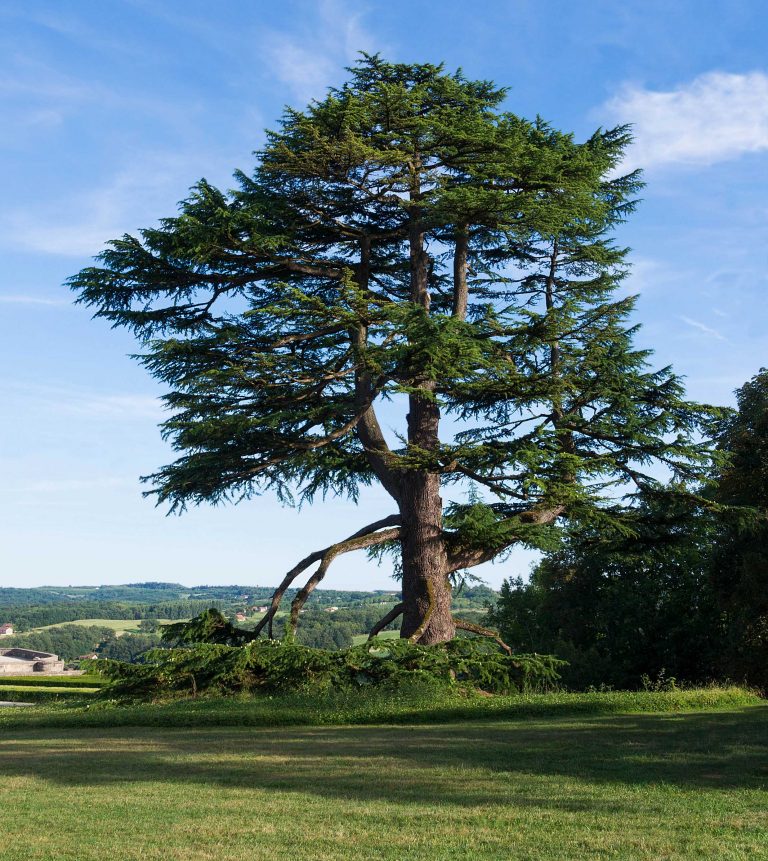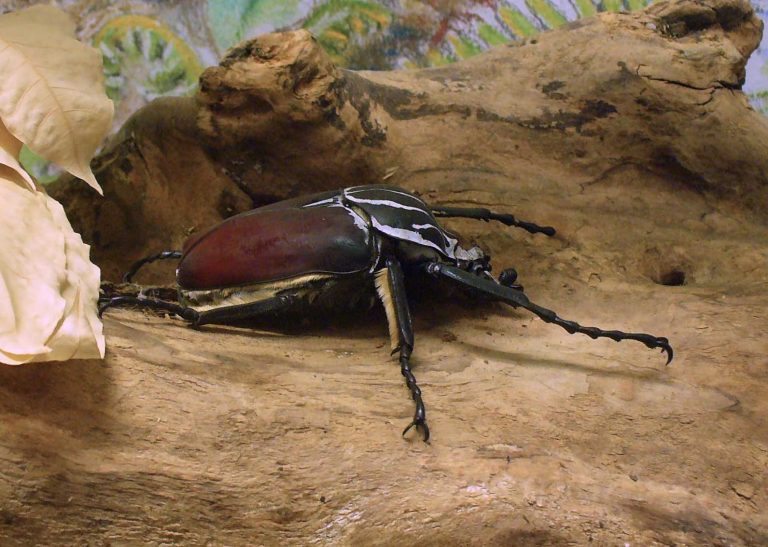Flowering Trees
While selecting a tree, a quick decision can give you a lifetime of regret. There are numerous trees that grow in beauty with generation and age, while many others age without any grace. Therefore, decide wisely and pick the ones that offer the best quality and your basis for selection should be based on either their beautiful flowers, their delicious fruits or the cool shade they provide. If you want to establish a tree for its flowers or for its shade, then you would do well in selecting a tree that is smaller in size
Flowering trees are the best. A huge mature tree not just only blossoms into flowers that beautify the environment with their sweet fragrance, but also provide you shade with its height and dense branches and foliage. No matter what flowering tree you like, they can help you to fence your elegant garden and provide you with beautiful flowers that bloom every spring.
However, every flowering tree is not same. Some flowering trees are persuasively more beautiful when compared to others. The flowers on the trees energize the mood and transmit the flavor of spring with their sweet aroma. It feels like; they transform the space, and for a moment the environment closes around them. If mature trees provide you the splendorous scenic beauty, then small trees bloom into the sparkle and promises of life.
An excellent flowering tree can even offer you more than this. The flowers on the trees act as an attractant for pollinators, small mammals, fruit eating birds and many more. They change the perspective of your garden in every season. While choosing a flowering tree, consider all features of tree from the leaves to the fruit color, leaf shape, their bark structure and their showy fall shade. When selecting trees, think beyond the spring season and look forward for successive blooming trees.
Here are some interesting flowering trees:
SASSAFRAS (S.Albidum)

Height: 30-60 ft
Before the flowers of dogwood trees bloom, the cluster of small little yellow flowers of the Sassafras trees brightens up the view of the native landscape during the early spring. Guy Sternberg, who works as the Starhill Forest Arboretum director at of the Illinois College in Petersburg, eulogizes the combination of colors of the grouping of Redbud blooms with sassafras flowers to a raspberry- lemon sherbet. Trees of Sassafras are endemic to North America, and play host to many butterflies specially to Spicebush, swallowtail, butterfly larvae and moths. Many consider the fruits of this tree as a perfect food for birds. The fruits of Sassafras have maximum fat content and they change their color to gloomy purple from green during late summer. This fat rich fruit is eaten by migrating birds and the native resident birds. The leaf-structure of Sassafras is generally mitten and rounded in shape. The leaves change color to orange from rich scarlet during early fall. This plant is very difficult to transplant; therefore look for specimen at a nursery or start with self sown seedlings. Hardiness Zones are 4-9.
REDBUD (Cercis Canadensis)

Height: 25 Feet
Redbuds auger spring. When the Redbud flower blooms, they outline the branches of the tree with its magenta red color and the garden appears to be enriched with its color. Their flowers last a full 3 weeks and then the large heart shaped leaf comes out. The Redbud trees are local to North America, and usually they are put to use to enhance the scenic beauty all round. Though, this tree tends to stoop with age, the height of the Redbud tree can reach 25 feet. Redbud seed pods are fascinating; however the seedlings are very small in size and hence hard to draw. Their mapped Hardiness Zone is from 4 -9.
FLOWERING DOGWOOD (Cornus Florida)

Height: 10-20 ft
It is impossible to resist yourself from the captivating beauty of the snow white flower of the Dogwood Trees. The edges of the trees move to life after they bloom into a pink flower specimen. The flowers of dogwood tree are super attractive for birds that find shelter inside its widespread branches. The most difficult challenge concerning planting this tree is to decide the perfect place to plant it. This is because, they are the “understory” trees (with shrubs and seedlings growing in the canopy under the shade) of the horizontal branches of the tall trees, . Good ventilation and drainage is important to keep your tree healthy and away from a fungal plant disease called anthracnose. Their mapped Hardiness Zone is from 5 -9. To ensure hardiness, gardeners of the north are advised to buy trees that belong to northern stock.
FLOWERING CRABAPPLE (Malus)

Photo by: John Talbot
Height: 15-25 ft
There are over 700 varieties of the Flowering Crabapple. The flowers wrap themselves in colors pink, red or white during spring. These trees are reliable, with strong, handsome woody structure and can be used to enhance the garden’s beauty. When these trees bloom into flower, they attract many pollinators and bees, they buzz the tree with life. They are among the wildlife trees. Some crabapple experts claim that while selecting a crabapple tree, always look for the advice of your local agents in your area Whereas some believe that the crabapple tree is best for birds, others opine that the Flowering Crabapple are small tress that deliver their fruit during winters. Each tree can grow between 15 feet – 25 feet in height. The hardy Zones are 4 -7.
FRINGE TREE (Chionanthus virginicus)

Height: 10-20 ft
It is hard to stay away from the tassel flowers of the beautiful Fringe tree. Fringe trees are comparatively small and accessible. The height of this tree varies from 10 feet – 20 feet. They bloom after the leaves of the tree produce the green canopy for its feathery flower. These trees are natively used in Mount Vernon to create a great effect on the grounds. They sometimes grow in combination with different native plants and the Amelanchier tree, (also called Serviceberry) around the borders. Many horticulturists opine that old fashioned trees like the fringe trees need to be planted on a higher scale. It is recommended to plant these trees in groves so as to increase the possibility of having female and the male tree together. Male trees flower rapidly while female trees produce fruits that will attract birds towards it. The tree can grow in shady area as well as in sunshine. Hardy Zone is 4 -9.
SWEETBAY MAGNOLIA (Magnolia virginiana and M. Virginiana Var. Australis)

Photo by: Derek Ramsey
Height: 10-20 ft
The gardens of southern America love the small goblet shaped cream colored flowers of the Sweetbay Magnolia in summer. It is difficult to know the exact origin of this tree because it grows well in Chicago as well in North Boston. Magnolia in Massachusetts was famous for their Fresh blossoms in the Boston flower trade. During late summer, birds eat the red seed of this tree. M. Virginiana Var. Australis is the name of its southern form while M. Virginiana is the northern form of the Sweetbay magnolia. Southern form is often evergreen and grow pretty much tall in height. M. virginiana is semi-green, and has several trunks. Sweetbay magnolia grows well in the semi- shade or in the sun and can adapt to drought and moist soil. The leaves shimmer during the breeze, showing to full effect, its silvery undersides.
Some experts a recommend you to plant the Sweetbay magnolia tree along the path so that people get the aroma of its flower when they pass by. It grows in Zones from 5-9.
American Yellow Wood (Cladrastis kentukea)

Photo by: Ulf Eliasson
Height: 30-50 ft
The white flowers of the American Yellowwood create a great view on every summer morning. American Yellowwood is endemic to the Mid and Midwest of the Atlantic, but it has not been very popular and found only rarely in the wild. Many experts attribute the importance of this tree to its silver bark and smooth touch. These trees are a second best option for planting at beaches. American Yellowwood’s flowers are very luxurious, but they do not bloom until the trees attain a height of at least of12 feet. Fall foliage color is usually soft yellow. The tree reaches 50 feet in height with spread-out branches. Their mapped Hardiness Zone is from 4 -9.
CRAPE-MYRTLE (Lagerstroemia indica)

Photo by: Didier Descouens
Height: 15-25 ft
Despite experiencing extreme summer heat for three months, crape myrtles display white, purple, red or white flower panicles. In fact a solo tree of crape myrtles can create the effect of a grove with its multiple trunk. Mature crape myrtle trees are upright and vigorous with smooth bark; however, as they grow older they appear more distinguished. The thin bark of the tree peels away during the summer displaying a shinny trunk. Crape myrtles require hot temperatures to bloom flowers. The cultivars that were planted in Seattle did not bloom until they were transplanted to hot island. The heat promptly brought the tree into bloom. Many crape myrtles grow up till 25 feet of height. The hardy Zone is 7-9.
Seven-Son-Flower (Heptacodium miconioides)

Height: 15-20 ft
Young trees can be a challenge, because they are lanky and awkward for several years before they develop into interesting specimens. Requiring tweaking and pinching to develop its form.
Seven-son flower trees are the inhabitants of China. The bloom period starts from late summer and stretches till early rainfall. They bloom into long lasting white flowers with terrific freshness. It looks stunning when combined with Bailtiger. The tree is tolerant to drought as well as salt, and grows to a 15 to 20 feet height. Many people find the young trees as challenging because of their awkward and lanky characterizes, before they actually develop into great specimen. Hardiness Zones are 5 to 8.
Japanese Maples (Acer palmatum)
The height reaches from 3 feet-20 feet and the tree displays a very well-textured foliage with bright color, tolerance for shade and interesting shapes. They are usually used to decorate beds, adorn lawns and pools. Hardiness Zones are 5 to 8.
Callery pear ( Pyrus Calleryana)
This is a rapid growing tree. It displays little white flowers during spring and rich foliage during the fall. The pyramidal canopy of this tree grows 30 – 45 feet till maturity. Early versions of Callery pear called Bradford are likely to come apart in storms, hence either choose ‘Chanticleer’ or ‘Aristocrat’. Hardy Zones -5 to 8.
Crabapple (Malus)
This tree attains 15 – 25 feet in height. Dark pink flower sprouts that turns into white blossoms during spring envelopes this tree Sequentially, the flowers transform into tiny yellow or red apples that are loved by the birds. The tree spreads widely into an irregular structure. The Hardy Zones- 3 to 8.
Chinese Dogwood (Cornus Kousa Chinensis)
This treedisplays white flowers during the spring with sharpened petals. Floppy and plump red colored fruits hang from the long horizontal branches during the fall. Hardy Zones -3 to 8.
Saucer Magnolia (Magnolia soulangeana)
This leafy tree reaches a height of 30 feet. It displays 6-inch-stretched, yellowish pink flowers during early spring. The Hardy Zone- 5 to 9.
Serviceberry (Amelanchier)
An adaptable and hard small tree, It grows from 6 feet -20 feet in height. The white flowers of Serviceberry in early-spring turns into edible dark fruits till June. Pale-pink dropped foliage enhances the woodland setting and near courtyards. Hardiness Zones- 2 to 9.
Love in Bloom

Photo by: Tom Sulcer
Flowering trees add life to the landscape. Their blossoms will enhance your mood and set the garden distinctly.
- The finest time for any tree plantation is during the monsoon season, when it rains continuously for at least 4 days.
- While planting a tree, begin with a small plant that can establish quickly and then gradually move to larger specimen as soon as the previously planted trees settle and start to propagate.
- Self sown seeds collected from the surroundings requires transplantation to get successful results.
- Always plant the new tree closer to existing tree in your area. This prevents the spotty and distributed look of your lawn.
- It is advisable to plant trees in group of different size to display their natural effect.
- Native tree plantation is an excellent way to communicate regional identity and also attracts native birds and pollinators.
- Some experts advocate variety, If there are ample of crabapples in your surroundings, then plant some different tree other than crabapples.
- Most experts agree that perfection in plantation is not required. This is because the bird has less value for a perfect tree, birds favor the tree with imperfect leaves as they approach imperfect trees to feed on insects.
- Remember that private nurseries and garden specialists definitely have some real treasures in their inventory.

Having discovered a fondness for insects while pursuing her degree in Biology, Randi Jones was quite bugged to know that people usually dismissed these little creatures as “creepy-crawlies”.







